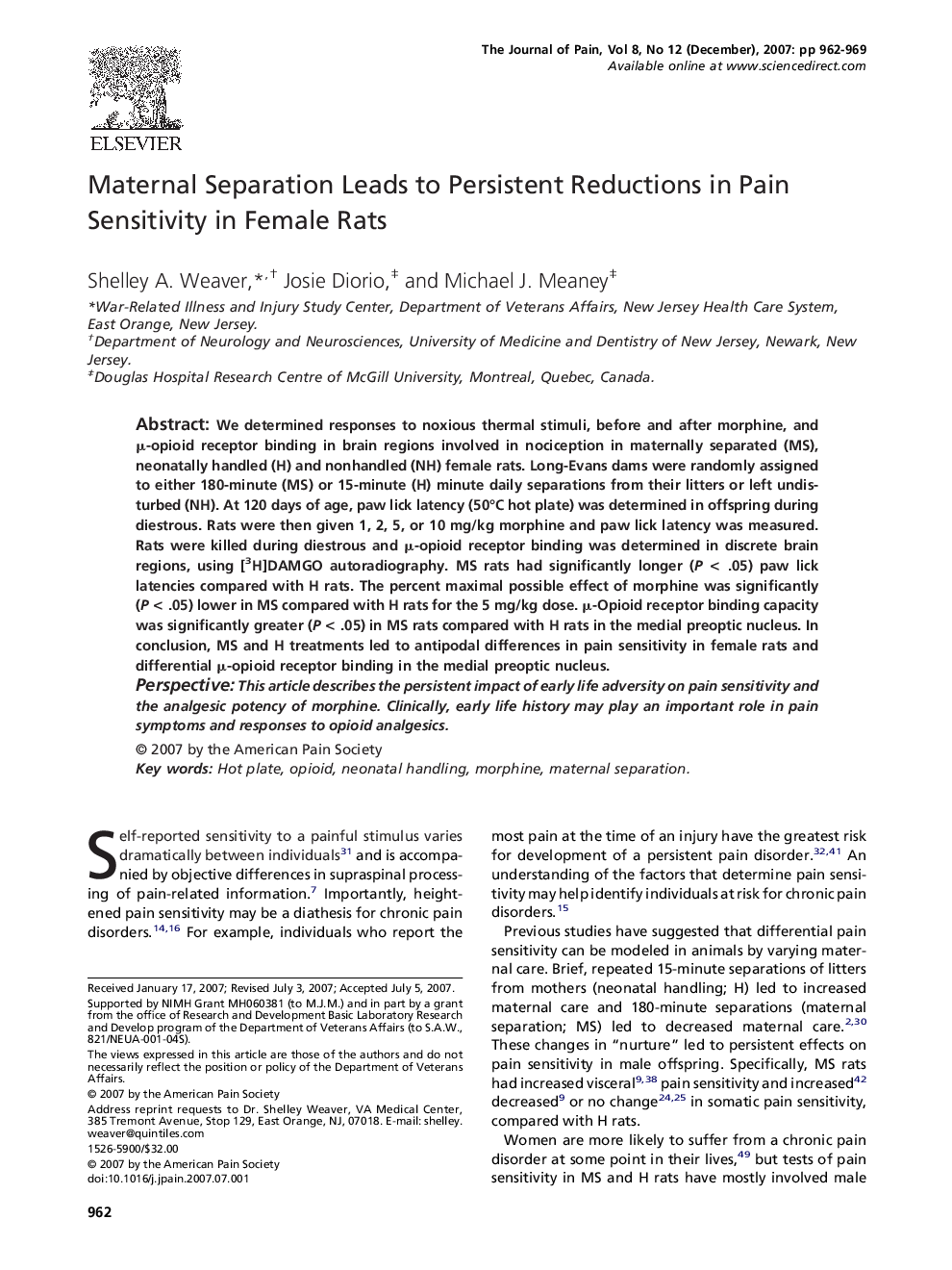| Article ID | Journal | Published Year | Pages | File Type |
|---|---|---|---|---|
| 2732950 | The Journal of Pain | 2007 | 8 Pages |
We determined responses to noxious thermal stimuli, before and after morphine, and μ-opioid receptor binding in brain regions involved in nociception in maternally separated (MS), neonatally handled (H) and nonhandled (NH) female rats. Long-Evans dams were randomly assigned to either 180-minute (MS) or 15-minute (H) minute daily separations from their litters or left undisturbed (NH). At 120 days of age, paw lick latency (50°C hot plate) was determined in offspring during diestrous. Rats were then given 1, 2, 5, or 10 mg/kg morphine and paw lick latency was measured. Rats were killed during diestrous and μ-opioid receptor binding was determined in discrete brain regions, using [3H]DAMGO autoradiography. MS rats had significantly longer (P < .05) paw lick latencies compared with H rats. The percent maximal possible effect of morphine was significantly (P < .05) lower in MS compared with H rats for the 5 mg/kg dose. μ-Opioid receptor binding capacity was significantly greater (P < .05) in MS rats compared with H rats in the medial preoptic nucleus. In conclusion, MS and H treatments led to antipodal differences in pain sensitivity in female rats and differential μ-opioid receptor binding in the medial preoptic nucleus.PerspectiveThis article describes the persistent impact of early life adversity on pain sensitivity and the analgesic potency of morphine. Clinically, early life history may play an important role in pain symptoms and responses to opioid analgesics.
